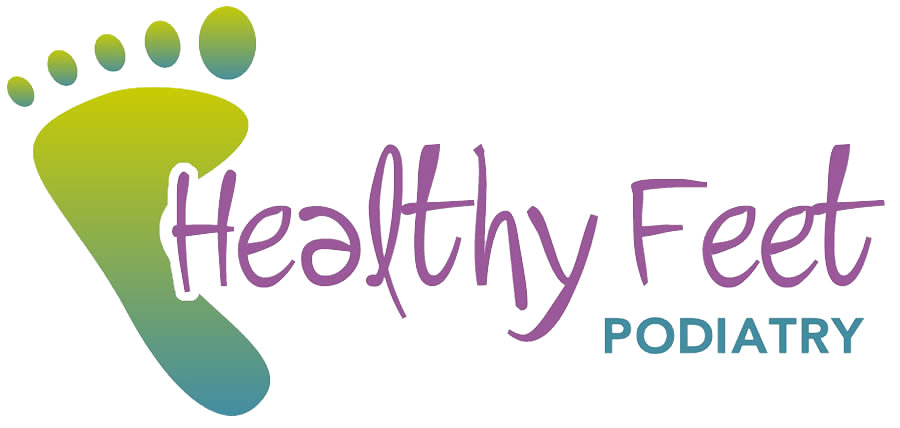Dr. Leo Krawetz of Healthy Feet Podiatry, Tampa and Brooksville Florida, performs an ingrown toenail surgery and explains the procedure.
Hi! I’m Dr. Leo Krawetz at Healthy Feet Podiatry.
Today, we’re gonna do a nail procedure where I’d remove the side of an ingrown nail that’s infected on one of my patients. So, this is the toenail that’s infected. It’s this side of the nail right here and I’m sure there was probably pus coming from the nail earlier. You can see the dry drainage on the side of the nail here. This is usually very painful for the patients and it needs to be removed permanently, so the nail will never grow back on the side. So, what I’m gonna do first is numb up the toe and this is a local anesthetic of 1% lidocaine and we’re gonna numb the toe up here. We just got a little on each side here. As you can see, it’s relatively painless. The toe gets numb pretty fast with this injection. So now, I’m gonna be able to put a tourniquet around the toe and this actually pushes some of the blood out of the toe as well as acts as a tourniquet, so there’ll be minimal bleeding, although there will be some bleeding during the procedure. Now, we’ll open up this tourniquet, so we can see the side of the nail that’s affected. And what I’d do first is free up the side of the nail that’s infected and I’m gonna take a few millimeters here. We’ll go under the nail plate itself, free it up all the way down in the corner, and as you can see, this goes way down into the corner and some of the nails are already loose on the side just because of the infection. The infection will actually lift up the side of the nail. So now, I’m gonna cut the side of the nail that’s ingrown. As you can see, it’s already flaking apart from trauma to the nail previously. Now, I’ll take my hemostat and go all the way in the corner and slowly pull the affected piece of the nail out. You can see how far down, that’s when you see all that is all nail taking into the skin and that’s all part of the ingrown nail. On the side of the toe after the nail is ingrown for so long, you get what’s called granulation tissue and this is just proud flesh right here on the side. Eventually, that will go down and the swelling will go down on the side of the toe as well. Now, I’m gonna make sure that the side of the nail is dry and I’m gonna put a chemical, which is called sodium hydroxide on the nail matrix. The nail matrix is the area of the nail under the cuticle that makes the nail grow and as you can see, it’s changing color. That just shows me that it’s cauterizing the nail cells and it’s also burning the nail cells. This is actually a chemical burn to the nail matrix. Normally, we do allow three 10-15 seconds sticks of the sodium hydroxide in the side of the nail and you can see as I go there’s last bleeding as I did this because it’s cauterizing the little blood vessels there. It’s also burning the nail matrix and it’s changing the color of the flesh underneath and that lets me know that the chemical is taking effect. The patient does not feel any of this because they’re numb and this is the third stick that I’m doing now and like I said, it’s about 10-15 seconds per stick. Now, I’ll examine the proud flesh and see if there’s any that can be removed, and there’s a little bit of what like I said called granulation tissue on the side of the toe. I’m removing some of that, clean it up a little bit. When this grows out, there will be a straight edge to the nail on the side right here. This flesh will move over this way and this proud flesh will actually go down in size with time. I’m just gonna clip this nail here too and I’d finish it off with some Betadine on the side of the toe and now, I will take the tourniquet off. We’ll wrap this up. The anesthetic should last about six hours or so. Whenever it’s off, there’s a little pain afterwards and a little discomfort for the first day or two. The patient usually takes Tylenol, Advil, or Aleve for a couple of days. If needed, they put ice at the base of the toe. They’ll put a gel on the side of the nail twice a day after cleaning it with soap and water and just a Band-Aid during the day. They won’t need a Band-Aid at nighttime, and they’re able to do all activities including swimming, exercise the day after the procedure. So, very simple procedure done in the office and as you can see, it doesn’t take much time at all to do this. You can visit me on the website at https://healthyfeetpodiatry.com. Thank you.
Ingrown Toenail Surgery
A: Ingrown toenail surgery is removal of the side of the toenail permanently by applying a chemical so the side of the toenail will never grow back.
A: The nail will not grow back after Ingrown nail surgery if a chemical is applied under the cuticle to remove the ingrown toenail forever.
A: The recovery time is 4 weeks to heal an ingrown toenail with almost no restrictions.
A: There are no limitations of exercise after ingrown toenail surgery except you may have soreness during certain activities.
A: Ingrown toenail surgery does not hurt because the toe is numbed with local anesthesia, which is a painless shot to numb the toe. There is minimal pain after the ingrown nail surgery which can be relieved with tylenol and ibuprofen.
